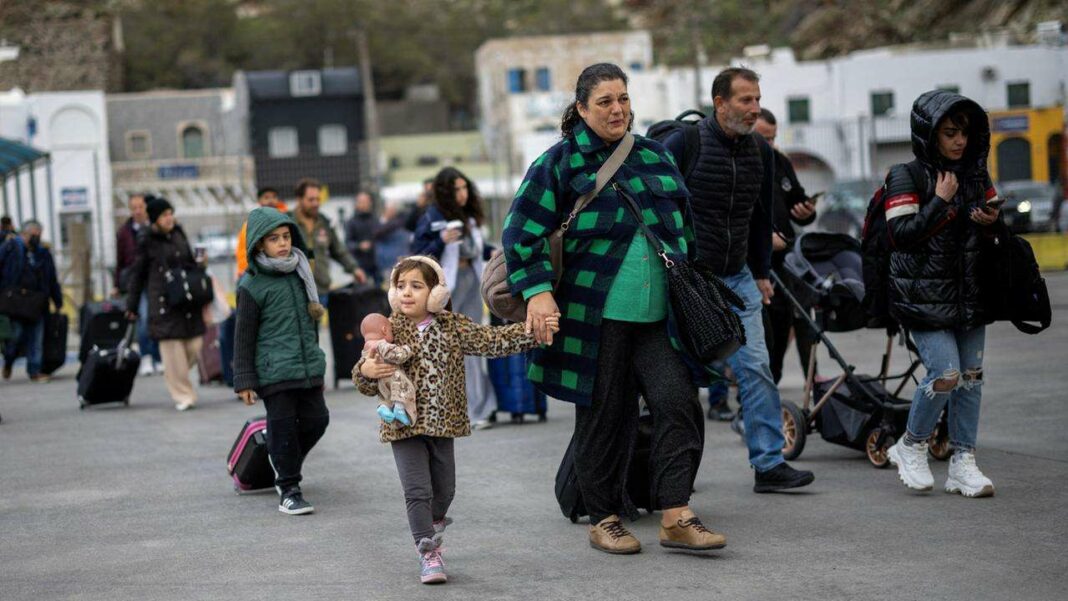Residents and visitors of Santorini are leaving the island due to fears stemming from recent earthquakes. Emotional farewells are evident as tourists recount their anxiety and the struggle to secure transportation. Approximately 9,000 people have evacuated, while local authorities, including the mayor, emphasize safety measures and emergency plans. Historical context highlights the dangers of seismic activity, recalling the devastating 1956 earthquake. Improved preparedness and alert systems are in place, offering some reassurance amid ongoing tremors.
Residents and tourists are departing from the picturesque island of Santorini amidst growing concerns over recent earthquakes. While they prioritize their safety, the emotional toll of leaving loved ones behind weighs heavily on their hearts.
A tourist from Mexico shares her frightening experience, stating she felt the earth tremble throughout the night and into the day after arriving just a day prior. “I cried all night because I was scared,” she recalls, reflecting the anxiety many visitors are experiencing.
Roughly 9,000 individuals have already chosen to leave Santorini, utilizing special ferries and additional flights that are still available. Long lines of vehicles have been seen heading towards the island’s port, with travelers recounting the struggle to secure tickets.
‘Around 9,000 people have left Santorini,’ reports Moritz Pompl from ARD Athens, addressing the ongoing earthquakes.
Departures are filled with mixed emotions. One woman tearfully expresses her distress, saying, “I have to leave my mother, my father, and my brother here. Let’s hope everything goes well.” Another person comments, “We have to leave, what should we do? Stay here?” The atmosphere is tense, with reports of ground tremors causing children to cry.
As the series of earthquakes continues, thousands have reportedly evacuated the island.
Emergency Preparedness on Santorini
Despite the unease, there is a sense of calm among the residents due to well-structured emergency plans. Nikos Zorzos, the mayor of Firá, reassures everyone by stating, “We clearly indicate safe places on the island and prepare possible food distributions.” He emphasizes their thorough assessment of the needs of those with special diets and disabilities who may require transportation.
Military and rescue teams have been deployed to the island, bringing emergency generators and rescue dogs. They have established temporary shelters where individuals can receive medical treatment if necessary.
For those who remain, safety protocols are in place. Residents are advised to avoid steep coastal areas due to potential rockfalls, a concern highlighted by online videos showing recent collapses. Schools and kindergartens will remain closed throughout the week to ensure the safety of children.
Historical Context: Memories of the 1956 Earthquake
The current earthquake activity, which has featured hundreds of minor to moderate tremors since late January, is alarming geologist Evi Nomikoú from the University of Athens. She notes that this clustering of seismic activity is unusual and concerning, with tremors reaching magnitudes up to 5.1 on the Richter scale. The epicenter of these quakes is located in the same area that experienced devastating earthquakes in 1956.
The 1956 seismic events along a fault line between Santorini and the neighboring island of Amorgos reached magnitudes of up to 7.7, triggering a tsunami with waves reaching heights of 25 meters. This disaster resulted in the destruction of many homes and the loss of over 50 lives.
Now, with more than 200 earthquakes recorded in just a few days, the Mediterranean island is bracing for any potential worst-case scenario.
Preparing for the Unexpected
Researchers are currently analyzing whether a significant earthquake is on the horizon or if the smaller tremors might be relieving pressure within the earth. The duration of this seismic activity remains uncertain.
Fortunately, Santorini is better prepared for such events than it was in the 1950s. The architecture has evolved to be more earthquake-resistant, and residents across Santorini and surrounding islands receive SMS alerts regarding hazardous areas and safety locations. Early warning systems have also improved, allowing many to evacuate in time should a major earthquake occur.
